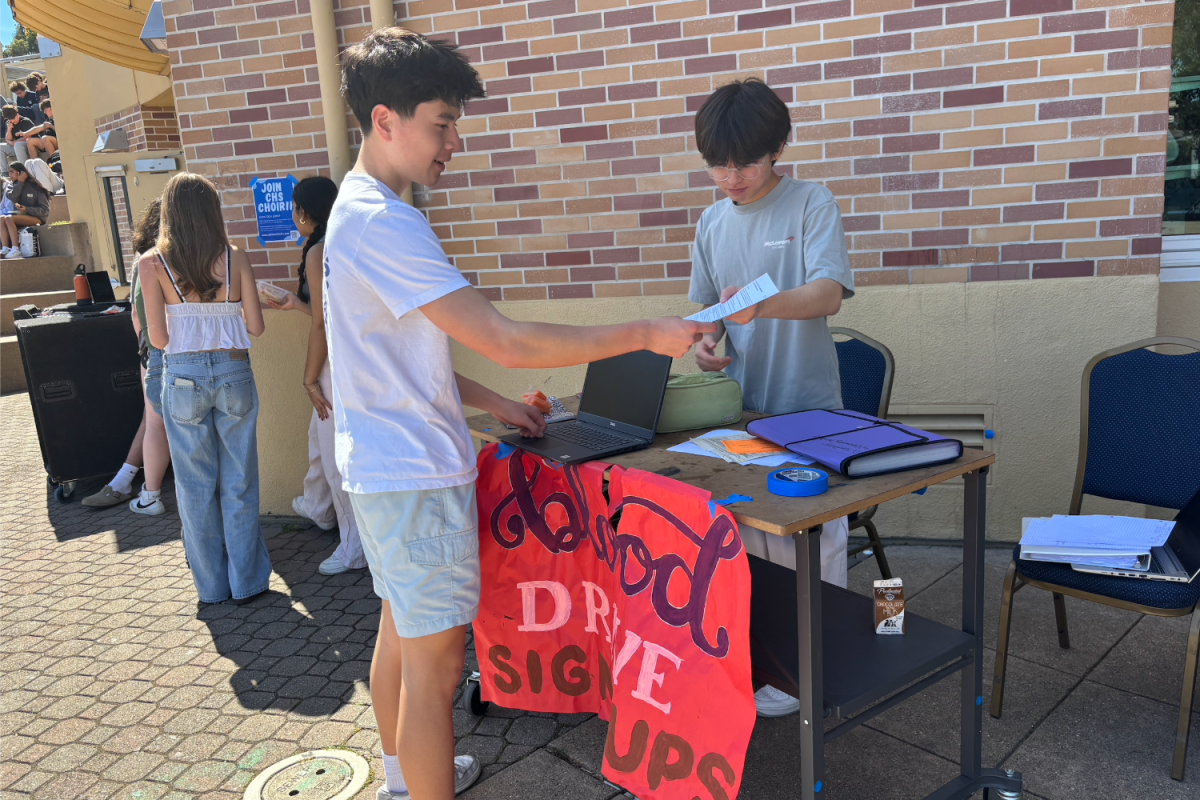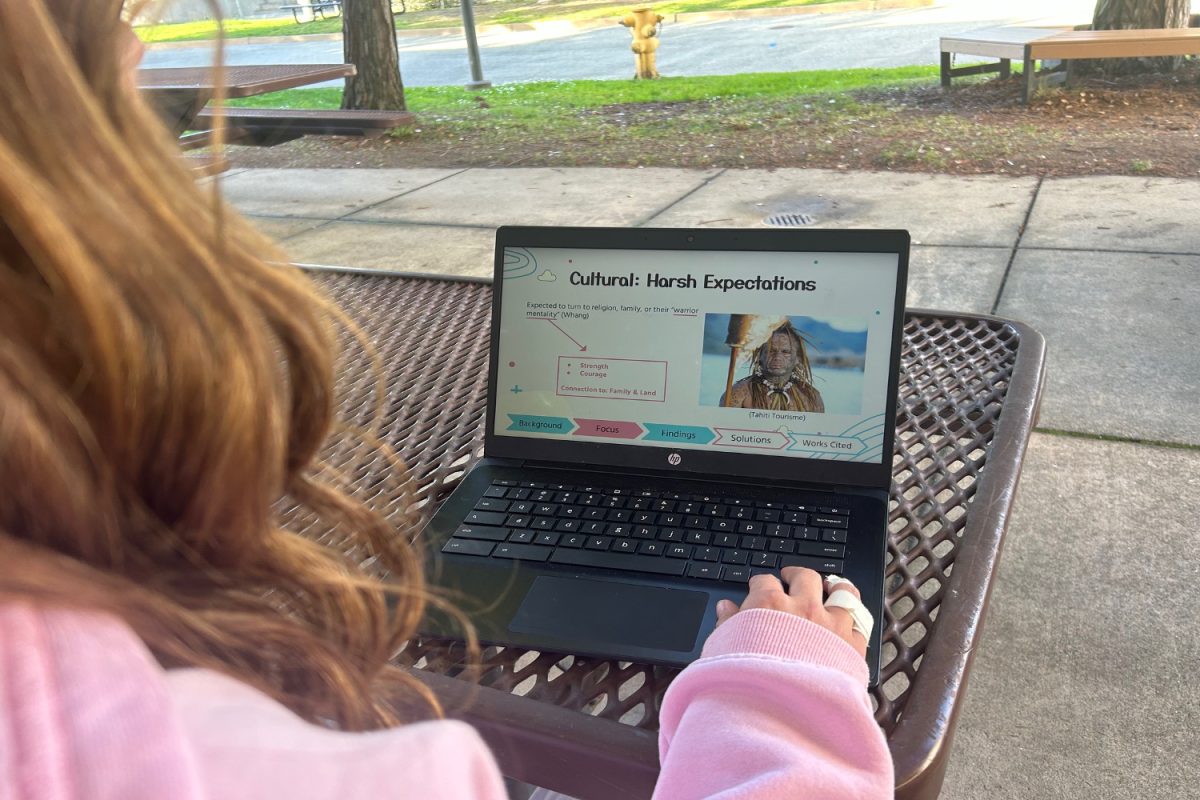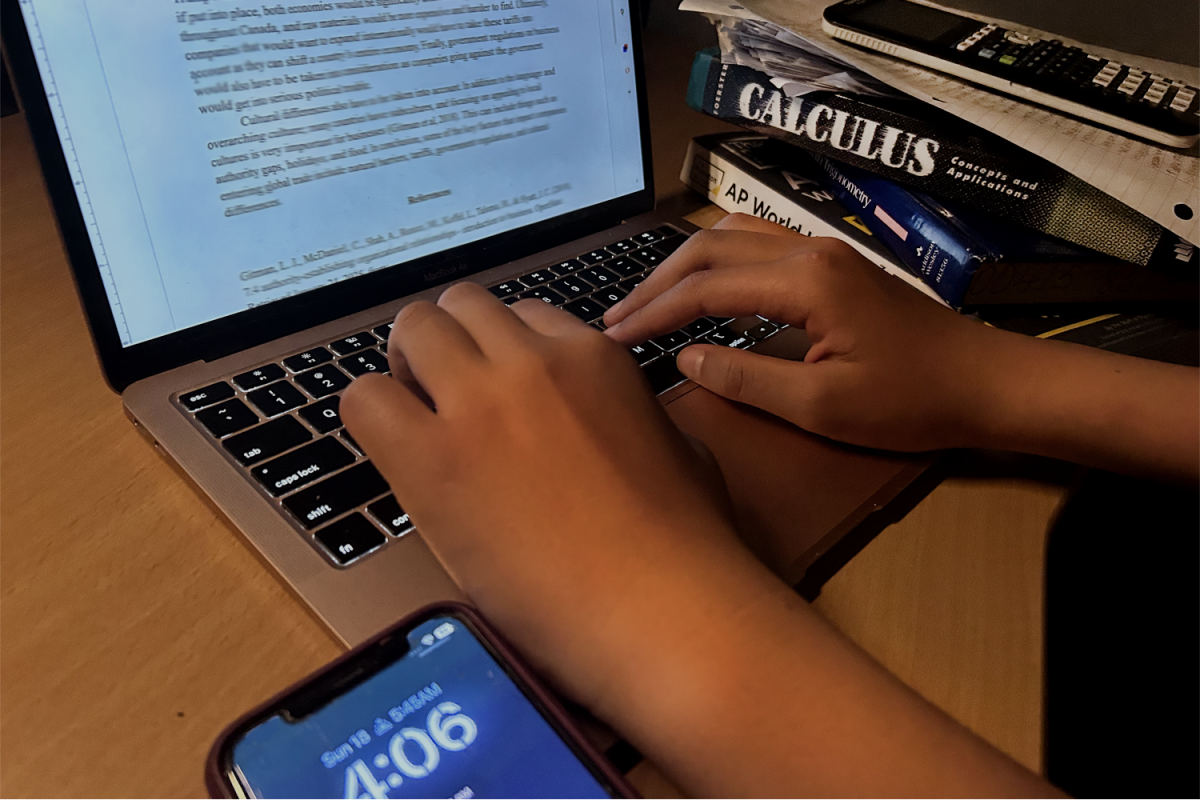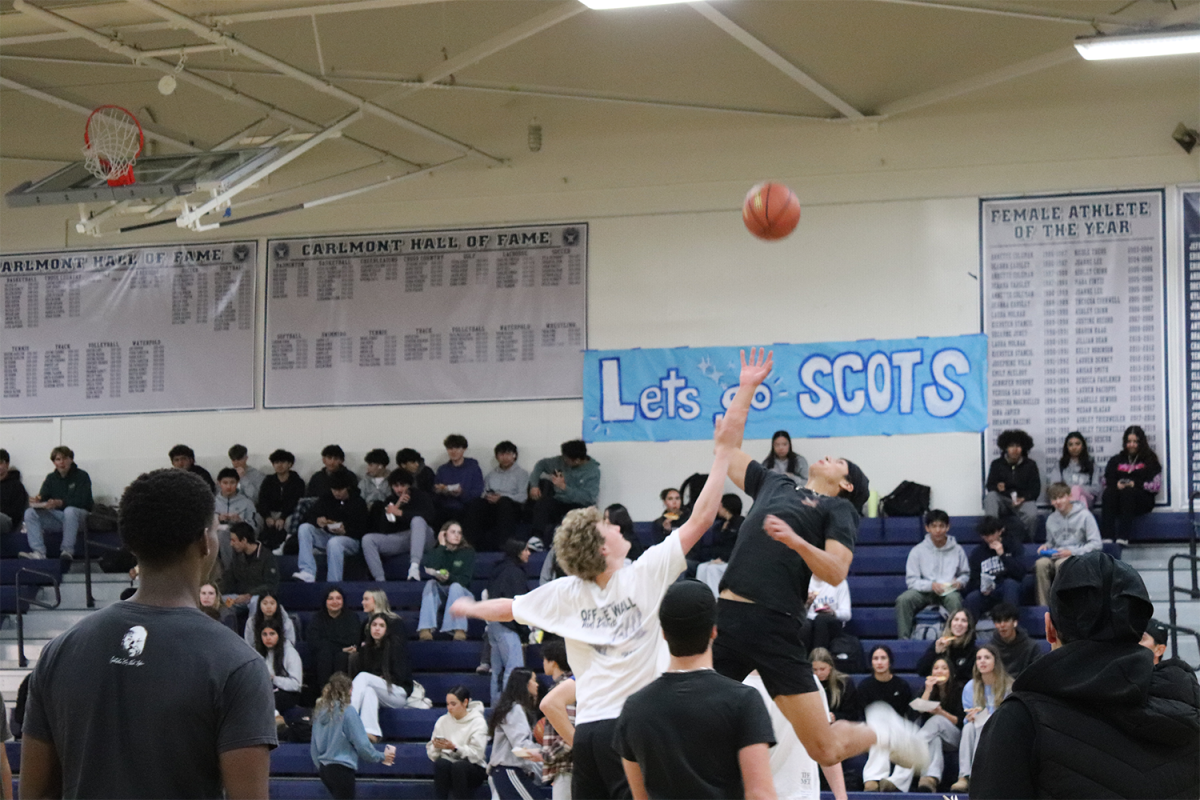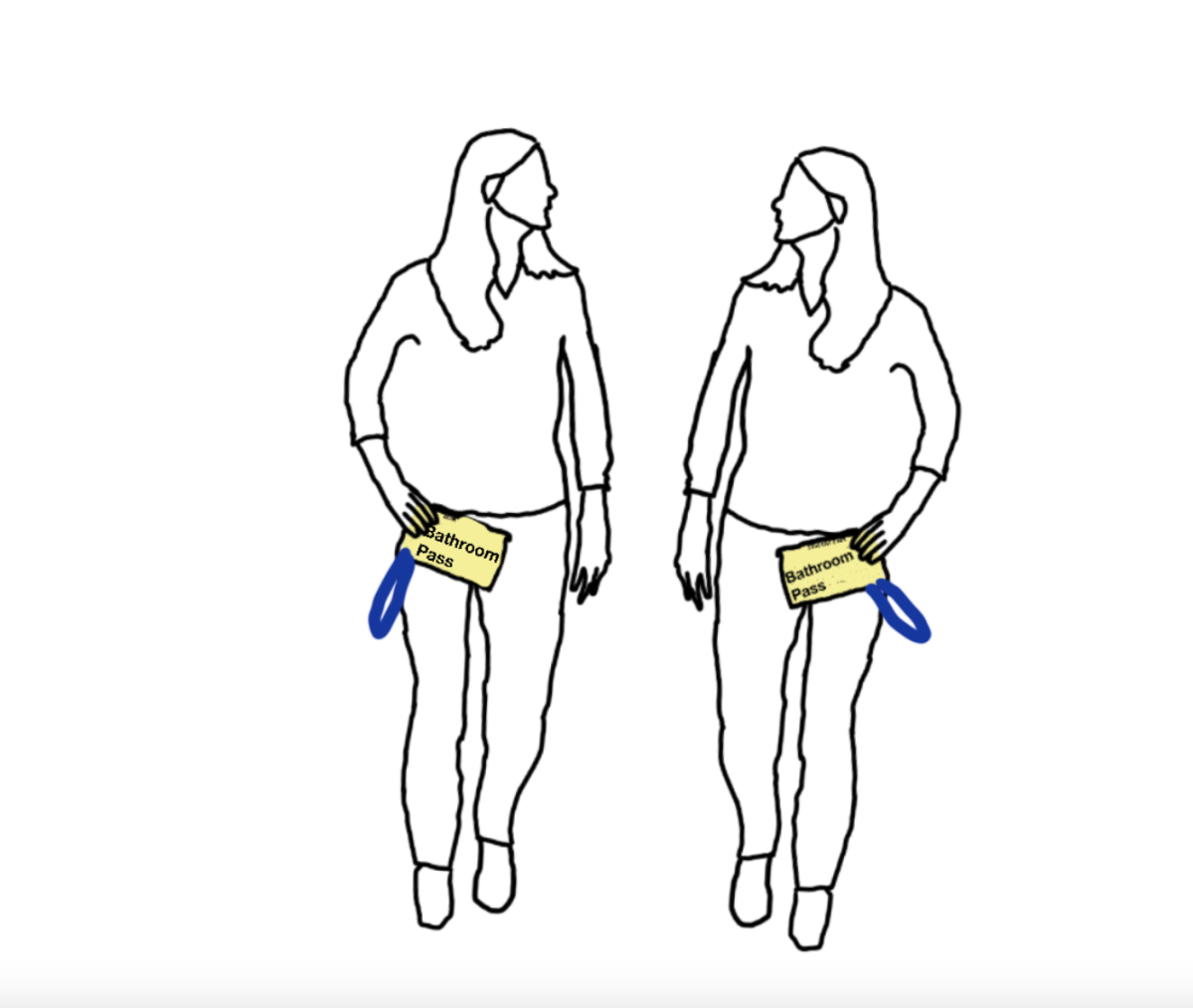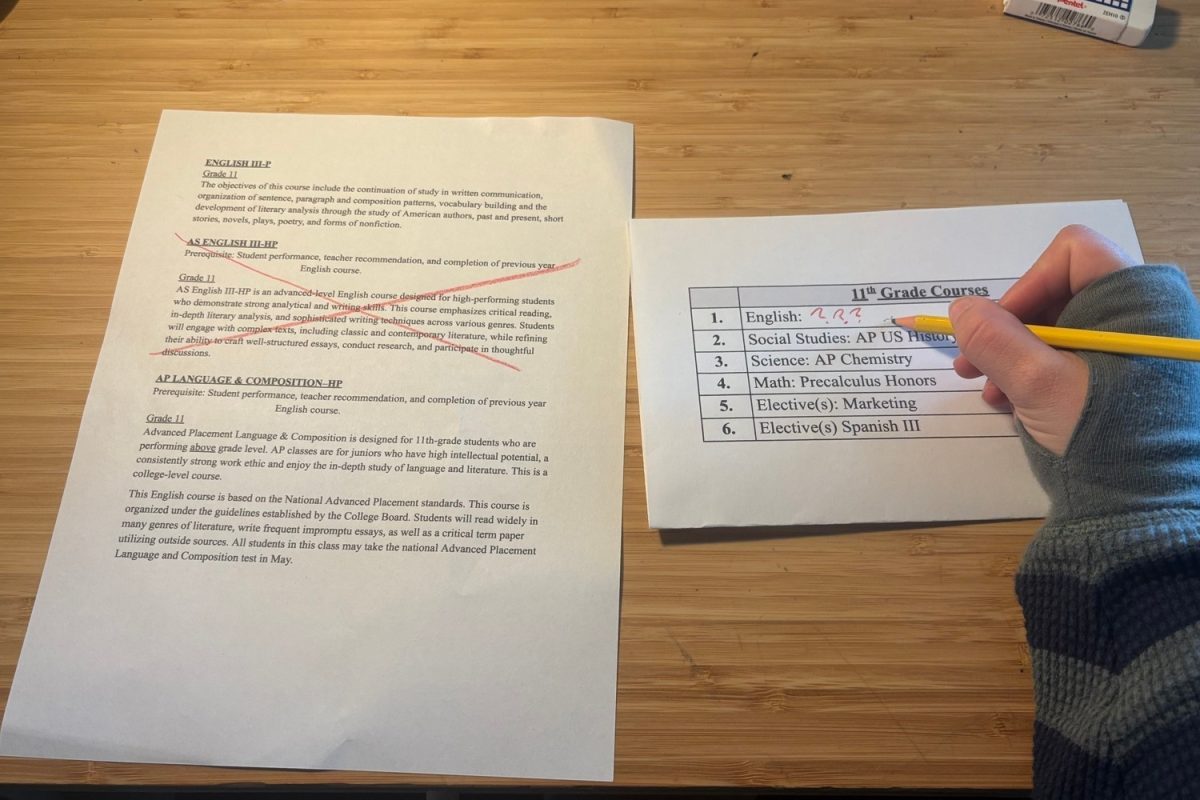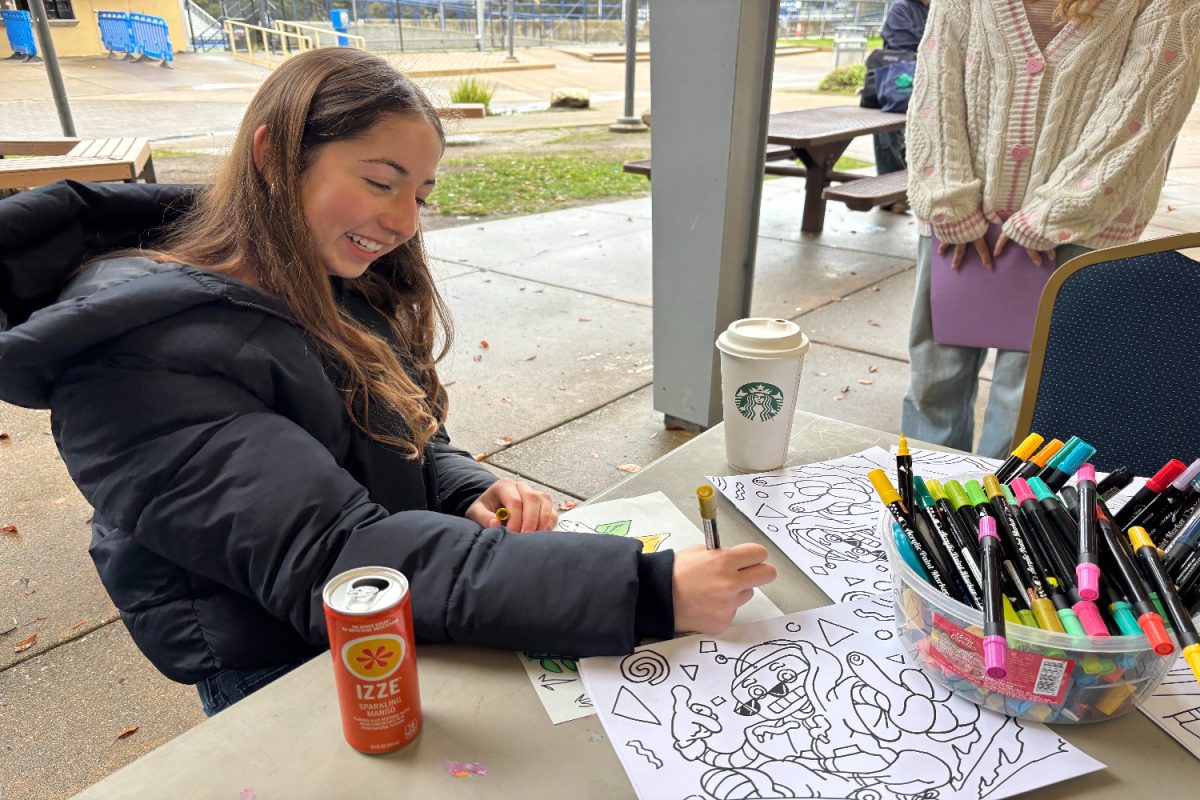Carlmont’s lunch staff enforces new policies in accordance with the California Department of Education requiring students to balance their meals.
On top of their efforts to manage crowds in the lunch lines, the food services team needs to pay attention to what students grab with their lunch. As a means to accomplish this, signs at the main cafeteria remind students to take additional foods to complete their meals.
A guide about foods and beverages in California states that entrees with meat or meat alternatives require fruits and vegetables on the side to meet the educational dietary guidelines.
“Even if you don’t take it, we must give it to you. You don’t have to take milk or juice. You just have to take a fruit or vegetable for lunch as per the state requirements,” said Food Services Lead Gail Horn.
Because some lunch options include a side of vegetables, various meals have different requirements. For example, with foods like burgers and sandwiches that are only comprised of a main course, additional foods are required.
To offset growing food waste, share baskets have been placed around the cafeteria and outside the food services area to allow students to discard additional food.
“We don’t know if students will be more inclined to eat the fruits, but they can put it in the share baskets if they don’t want it,” Horn said.
Students have also noticed increased encouragement to utilize the share baskets. As lunch periods progress, more fruits, mainly carrot packets and oranges, end up in them. While not all students use them, they still allow for some food waste to be prevented.
“When I grab breakfast, the person who hands it out says, ‘Grab the fruit and if you don’t want it, put it in the share basket,’” said Rosti Bautin, a junior at Carlmont who regularly gets school meals.
With the new changes, most students end up grabbing fruits or vegetables. However, as students are forced to take them, undesired ones can easily go to waste.
“If you look in the trash cans, there’s always a ton of carrot packets and apples,” said Arthur Bernadi, an officer of LivOrganic, a club focusing on healthy diets. “It’s not high-quality fruit — the apples usually have blemishes.”
While serving fruit is a state requirement, the aftermath, whether it is eaten, put in share baskets, or thrown away, depends on the students.
“There’s really nothing the staff can do because they can’t force anyone to eat the fruit,” Bernadi said.



